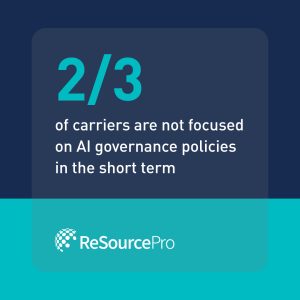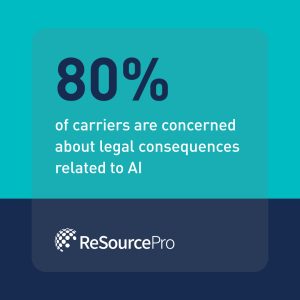The artificial intelligence (AI) landscape has changed significantly over the past year, presenting both fresh opportunities and new challenges to the property & casualty insurance industry. As AI continues to evolve, especially through advancements like GenAI, insurance companies must create strong governance frameworks to keep AI use transparent and ethical.
What is AI governance?
First, let’s establish the core of AI governance. An effective approach to governance includes a set of processes and frameworks that ensure regulatory compliance throughout the AI lifecycle – while still allowing room for innovation. It should also address key concerns like ethical violations, transparency, explainability, and bias. Managing these concerns through guidelines and structure allows us to realize the full potential of AI, with humans still in the loop.
How are carriers managing AI today?
Many insurance carriers have been using AI for decades and have a clear understanding of responsible AI management. However, with the emergence of tools like GenAI, organizations must take into account new issues, like content accuracy and improper outputs. These considerations further complicate developing governance frameworks. For most carriers (80%), the potential legal consequences of AI are the greatest cause for concern. Ethical and social concerns are also top-of-mind.
For most insurers, AI planning responsibilities are incorporated into current management and governance functions, primarily IT and data/analytics units. However, over one quarter have no formal structure, or grant responsibility to actuarial or individual business units.
The consequences of inconsistent AI governance
Without clearly defined responsibilities and governance models, organizations may battle inconsistencies. In addition to taking up unnecessary resources, these issues could make it more difficult to keep up with innovation and regulations.
Only around one-third of carriers have short-term plans to develop an AI operating model or AI governance policies. Nearly half of respondents are focusing on AI and machine learning model management instead. While these areas are also vitally important, to better address their top concerns, many carriers should seriously consider refocusing their efforts on operating model and governance.

How can we responsibly manage AI moving forward?
Decision-making processes can be streamlined if carriers place more emphasis on integrating AI governance into existing organizational structures. This is also an important step toward aligning AI strategy with broader business objectives. However, with three possible organizational archetypes for carriers to consider, selecting the best approach to govern and manage AI responsibly can be challenging. Enlisting the help of experts in digital transformation, AI, and data management can help you build a governance framework that guides all aspects of AI development, use, and monitoring across the entire enterprise.
Find more insights in our new research report, “AI Governance in P&C Insurance: Addressing Concerns in a Rapidly Evolving AI Landscape.” To learn about how we support P&C carriers like you throughout your digital journey, click here.





